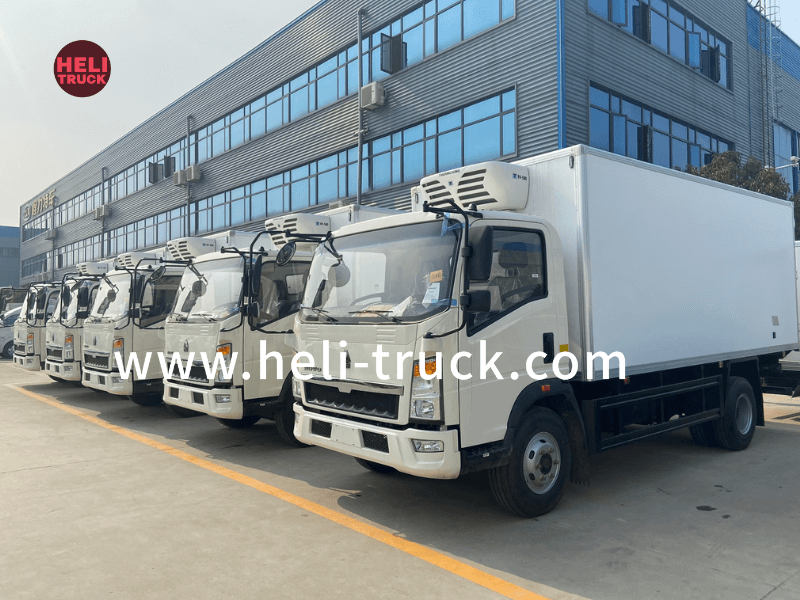Introduction
Garbage compactor trucks play a crucial role in waste management systems around the world. These specialized vehicles are designed to collect, compact, and transport solid waste efficiently. One key factor that significantly impacts the performance and effectiveness of a garbage compactor truck is its dimensions. In this comprehensive guide, we will delve into the various aspects of garbage compactor truck dimensions, including size considerations, design features, and the impact on operational efficiency.
Understanding Garbage Compactor Truck s
Garbage compactor trucks, also known as waste compactors or trash compactors, are specifically designed to collect and compact solid waste materials. These vehicles are commonly used by municipal waste management departments, private waste collection companies, and other organizations involved in waste disposal.
The primary function of a garbage compactor truck is to compress solid waste materials to reduce their volume. This compaction process allows the truck to collect and transport a larger amount of waste in each trip, thereby improving efficiency and reducing the frequency of collection rounds. By compacting the waste, garbage compactor trucks help optimize space utilization and minimize transportation costs.
Garbage compactor trucks come in various sizes and configurations to accommodate different types of waste collection needs. The dimensions of a garbage compactor truck are a critical factor that influences its capacity, maneuverability, and overall performance. Let's explore the key dimensions to consider when evaluating garbage compactor trucks.
Size Considerations
When it comes to garbage compactor trucks, size matters. The dimensions of a compactor truck determine its capacity to collect and transport waste, as well as its ability to navigate through urban areas and access narrow streets. Here are some of the key size considerations to keep in mind:
1. Overall Length: The overall length of a garbage compactor truck is an important dimension that impacts its maneuverability and storage capacity. Longer trucks may have a larger waste collection capacity but could face challenges when navigating tight corners or narrow streets.
2. Wheelbase Length: The wheelbase length is the distance between the front and rear axles of the truck. A longer wheelbase provides better stability and weight distribution, which is important for ensuring safe operation and reducing the risk of tipping over when the compactor is in use.

3. Width: The width of a garbage compactor truck influences its ability to access narrow streets and alleys. Trucks with a narrower width are more maneuverable in urban environments and can reach areas with limited space for waste collection.
4. Height: The height of a garbage compactor truck is crucial for clearance under bridges, power lines, and other overhead obstacles. It also determines the maximum height of waste containers that the truck can collect and compact.
Design Features
In addition to the overall dimensions, the design features of a garbage compactor truck play a significant role in its efficiency and performance. Here are some key design features to consider:
1. Compaction System: The compaction system is the heart of a garbage compactor truck, responsible for compressing solid waste materials to reduce their volume. The design and efficiency of the compaction system determine the truck's capacity to collect and transport waste effectively.
2. Loading Mechanism: The loading mechanism of a garbage compactor truck is designed to lift and empty waste containers into the compaction chamber. The design of the loading mechanism should ensure smooth and efficient operation, minimizing downtime and increasing productivity.
3. Storage Capacity: The storage capacity of a garbage compactor truck refers to the volume of waste that can be collected and compacted before the truck needs to unload. Trucks with larger storage capacities can complete more collection rounds before reaching full capacity, improving operational efficiency.
4. Safety Features: Garbage compactor trucks are complex vehicles that require careful operation to ensure the safety of both the operators and the public. Safety features such as backup cameras, warning lights, and emergency stop buttons are essential for preventing accidents and injuries.
Impact on Operational Efficiency
The dimensions of a garbage compactor truck have a direct impact on its operational efficiency and cost-effectiveness. By carefully considering the size and design features of a compactor truck, waste management organizations can optimize their waste collection processes and improve overall performance. Here are some ways in which garbage compactor truck dimensions can affect operational efficiency:
1. Increased Capacity: Garbage compactor trucks with larger dimensions have a higher waste collection capacity, allowing them to collect and transport more waste in each trip. This increased capacity reduces the number of collection rounds required, saving time and fuel costs.
2. Improved Maneuverability: Compact garbage compactor trucks with smaller dimensions are more maneuverable in urban settings and can access tight spaces more easily. Improved maneuverability enhances the truck's efficiency in navigating through crowded streets and alleys.
3. Reduced Maintenance Costs: Garbage compactor trucks that are well-designed and properly sized experience less wear and tear on their components, resulting in lower maintenance costs over time. Trucks with optimized dimensions are less likely to encounter operational issues that could lead to expensive repairs.
4. Enhanced Safety: The dimensions of a garbage compactor truck can impact its stability and handling, affecting the safety of the operators and the public. Trucks with the right dimensions and design features are safer to operate, reducing the risk of accidents and injuries.
Conclusion
Garbage compactor trucks are essential vehicles in waste management systems, helping to collect, compact, and transport solid waste efficiently. The dimensions of a garbage compactor truck play a critical role in determining its capacity, maneuverability, and overall performance. By considering factors such as size, design features, and operational efficiency, waste management organizations can select the right compactor truck for their specific needs and optimize their waste collection processes. With the information provided in this comprehensive guide, organizations can make informed decisions when evaluating garbage compactor truck dimensions and maximizing their efficiency in waste management operations.
